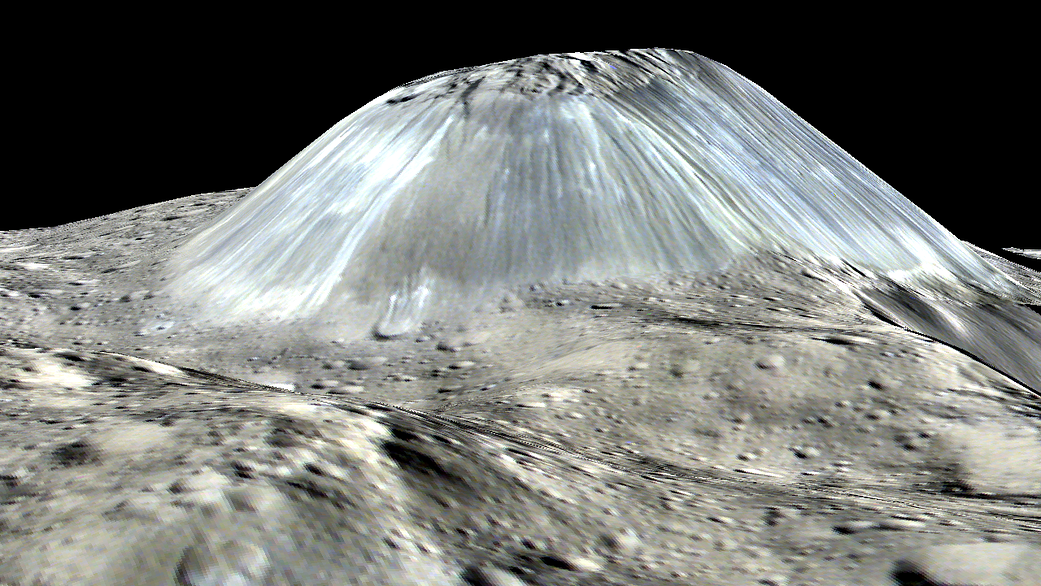
Ever since we laid robotic eyes on the lone, giant mountain on Ceres, scientist have been obsessed with a single question: How did Ahuna Mons form? New models suggest the mountain is an icy volcano, adding on to the growing body of evidence that even small worlds can be geologically active.When NASA’s Dawn spacecraft arrived in orbit around the dwarf planet Ceres in the main asteroid belt, it found a single lone mountain in its vast, cratered plains. Since then, scientists have puzzled over its origin. After running scenarios for every formation process they could dream up, they think they’ve found an answer.With a single spacecraft in orbit and no rovers to poke and prod directly, researchers are dependent on remote sensing to collect data, then modeling scenarios to try to make that data into a coherent story. Scientists brainstormed every process we know about that can create mountains – volcanism, tectonic movement, even buoyant displacement – and tested models to see what fits our observations.Cryovolcanoes are a unique feature to other planets in our solar system not found on Earth. These volcanoes erupt frozen slurry of salty ices instead of molten rock. They’re increasingly common in the outer solar system, famously caught erupting on Enceladus by the Saturn-orbiting Cassini spacecraft. Now it looks like they may also exist closer to the Sun.When researchers modelled potential cryovolcanoes on Ceres, their hypothetical scenario looked similar to terrestrial volcanoes with high-viscosity magma. The peak of Ahuna Mons is riddled with fractures and tiny hills, consistent with thick, gooey material
erupting, oozing in a messy spread until
it cools and hardens. As it cools, the materials fractures and breaks into boulders, which tumble down the mountain to create a halo of debris. All aspects of this process common to terrestrial volcanoes with high-viscosity lava are also present on Ceres’ massive mountain, suggesting that that it formed the same way.In order for the models to match observations, the mountain on Ceres must be quite young, and the product of a high-viscosity mix of ice and salt. But like everything else on Ceres, this is the start of a whole new round of questions. What does the interior structure of the dwarf planet look like, and how is heat involved in driving active surface processes? What salts are mixed into the ice, and how far from pure water is it? Can we find evidence of other cryovolcanic processes on Ceres, or is this mountain a unique outlier reflecting some yet-unknown localized oddity? And if we can find cryovolcanoes on dwarf planets in the main asteroid belt, where else are we going to find them?









